Matteo, thank you for being here with us today. We often hear companies and startups
claiming to offer artificial intelligence or analytical solutions. However, this wide range of
offerings can sometimes overwhelm adopters, making it challenging to identify the most
suitable solutions. Optit has deep roots in applying mathematical models to solve business
problems. Based on your experience, what would you say to help adopters navigate this
complex landscape and make informed decisions?
Thank you very much, Raffaele, for inviting me. It’s a pleasure to share our perspective. Let me
start by introducing Optit and its origins. Our journey began in 2007 with a clear vision:
bringing mathematical models from operations research into the business world. From the
start, we focused not only on the scientific value of what we do but also on all the enablers
necessary to make decision science applicable to real-world business processes.
There are two critical elements I believe every provider must address, regardless of the
specific solution they offer. The first is that the model itself, while crucial, is not enough to
deliver value on its own. At Optit, we address this challenge through two key organizational
choices.
The first is our Software Factory, which is dedicated to building platforms, applications, and
solutions that embed our models. The user ultimately interacts with an interface, and this
interface must speak directly to the processes they manage daily. Importantly, it needs to be
user-friendly for individuals who may not have expertise in artificial intelligence or operations
research. Decision-makers using these tools should focus on their jobs, not on mastering
complex algorithms.
The second element involves bridging the organizational and human gap. This means
translating real-world processes into mathematical terms and analyzing data in ways that
allow advanced techniques like machine learning to be applied effectively. Ultimately, the
person remains at the center of the decision-making process, supported by technology that
simplifies and enhances their work.
This is why, alongside our technical experts, we have consultants who focus entirely on
understanding the client’s needs and translating them into actionable solutions. Consultants
are not tasked with coding or developing the models themselves; instead, they act as the
crucial bridge between the technology and the people who will use it.
That’s an interesting point about the importance of consultants. From your perspective, what
makes consultants so essential in projects like these?
Consultants play a critical role because they help bridge the knowledge gap between technical
solutions and the practical realities of the client’s organization. As someone with a
background in management consulting, I know firsthand the value of entering a project with a
willingness to learn.
When we approach a new project, we’re not necessarily experts in the client’s industry or
specific challenges. However, by working closely with their internal teams, we capture their
expertise and translate it into mathematical models and actionable tools. This requires both
technical skills and the ability to communicate effectively, ensuring that the client’s
knowledge is fully reflected in the final solution.
For example, one of our most significant projects started with optimizing cogeneration plants
in district energy systems. Today, we’re helping a major utility in New York manage the
transition toward decarbonizing the city’s energy infrastructure. Achieving this required not
only advanced artificial intelligence tools but also a deep understanding of the client’s
operational needs.
Energy is clearly a key area for Optit. Would you say it’s one of the primary sectors where
you’re focused right now?
Absolutely. The energy sector has become a major focus for us, and for good reason. It’s
undergoing a massive transformation, driven by the urgent need to decarbonize and shift
toward sustainable energy systems.
We’re particularly active at the intersection of heating and electricity, as heating alone
accounts for about half of the energy we use every day. By optimizing energy systems, we aim
to contribute to building a better, more sustainable world.
That said, energy is not the only area where we work. We also have strong expertise in logistics
and supply chain optimization, as well as in circular economy projects, particularly in waste
collection and management. These areas all share a common thread: the ability to use
decision science to drive meaningful change and efficiency.
You mentioned earlier the importance of translating client needs into actionable tools. Do you
think process know-how is essential for developing these solutions?
Absolutely. Process know-how is fundamental. Consultants must immerse themselves in the
client’s environment to understand the details of their processes—details that even the end
user might not fully articulate at the outset.
This involves what I call a “mimic exercise,” where we learn the intricacies of the client’s
operations and translate them into solutions that are both effective and user-friendly. It’s not
just about building the best mathematical model; it’s about ensuring that the model integrates
seamlessly into the client’s processes and generates real value.
For example, in our energy projects, we don’t just optimize systems in isolation. We work
collaboratively with the client to understand their specific challenges, from regulatory
constraints to operational priorities. This level of engagement is what sets effective solutions
apart from generic ones.
You’ve achieved so much in areas like energy and logistics. Looking ahead, what are your
plans for future initiatives?
Energy will remain a major focus for us, as it’s at the heart of one of the most significant
societal transformations of our time. Decarbonization is not just a technical challenge—it’s a
societal one, requiring collaboration across industries and governments.
We’re also committed to expanding our work in logistics, supply chains, and the circular
economy. These areas offer incredible opportunities to apply decision science to real-world
problems, creating solutions that are both sustainable and efficient.
Lastly, we’re always open to exploring “exotic” projects—those that push the boundaries of
what decision science can achieve. For us, it’s about staying curious and innovative, no matter
the challenge.
Matteo, thank you for sharing your insights and experiences. It’s inspiring to see how Optit is
using decision science to drive meaningful change across industries.
Thank you, Raffaele. It’s been a pleasure to discuss these topics. I’m proud of what we’ve
accomplished at Optit, and I’m excited about what the future holds as we continue to
innovate and grow.
You’ve achieved so much in areas like energy and logistics. Looking ahead, what are your
plans for future initiatives?
Energy will remain a major focus for us, as it’s at the heart of one of the most significant
societal transformations of our time. Decarbonization is not just a technical challenge—it’s a
societal one, requiring collaboration across industries and governments.
We’re also committed to expanding our work in logistics, supply chains, and the circular
economy. These areas offer incredible opportunities to apply decision science to real-world
problems, creating solutions that are both sustainable and efficient. Lastly, we’re always open to exploring “exotic” projects—those that push the boundaries of
what decision science can achieve. For us, it’s about staying curious and innovative, no matter
the challenge.
Matteo, thank you for sharing your insights and experiences. It’s inspiring to see how Optit is
using decision science to drive meaningful change across industries.
Thank you, Raffaele. It’s been a pleasure to discuss these topics. I’m proud of what we’ve
accomplished at Optit, and I’m excited about what the future holds as we continue to
innovate and grow.

